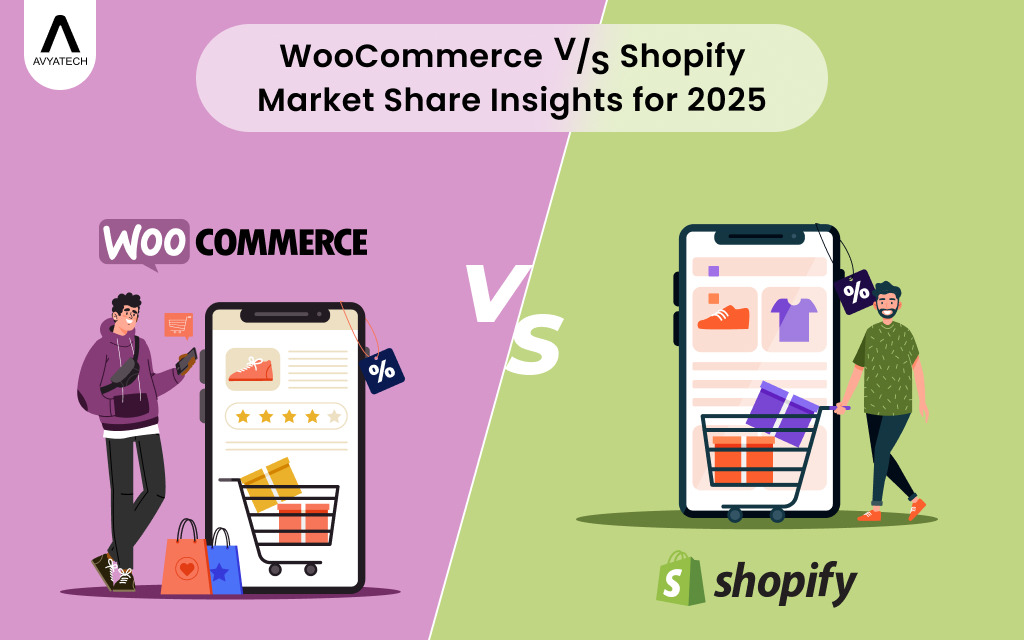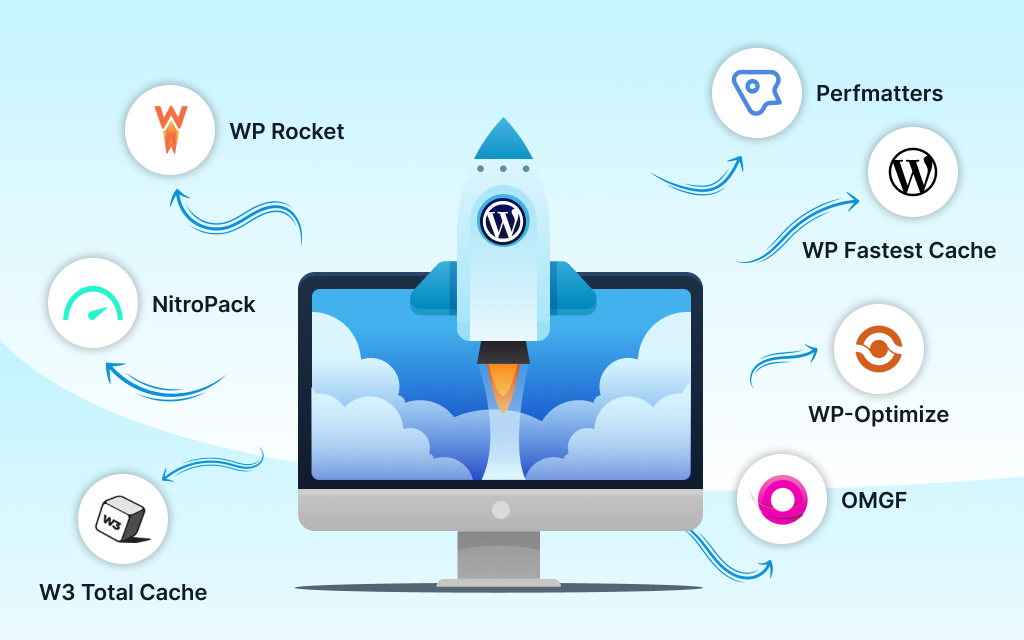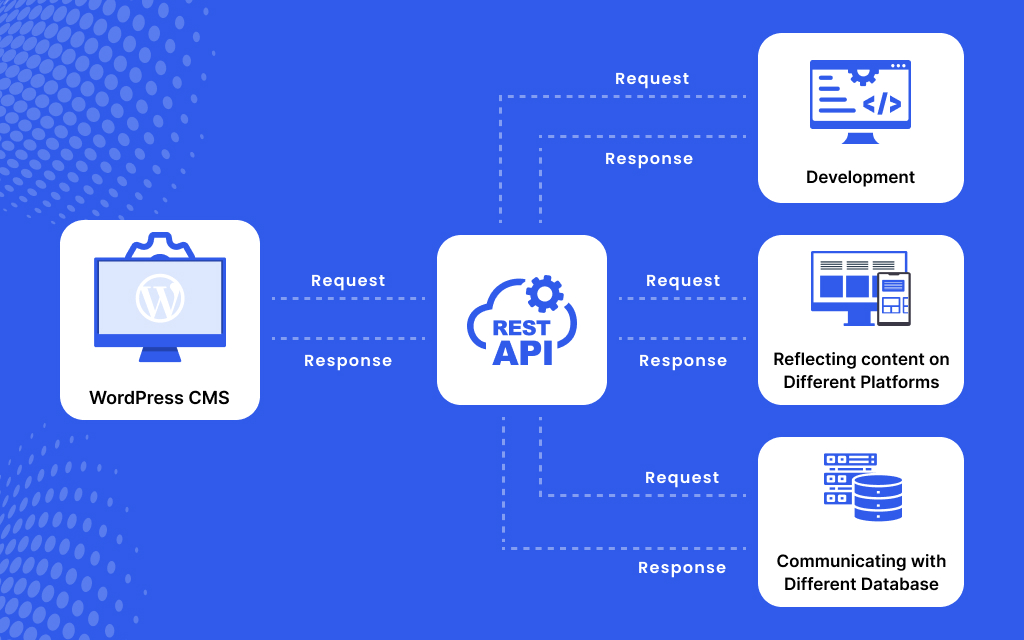Leading eCommerce platforms play a big role in building unique eCommerce websites and online stores, known for their exquisiteness, conversion optimization, and hassle-free functionality. WooCommerce vs Shopify is the biggest concern that catches all eyes when it comes to having a preferred eCommerce platform. With many similarities and differences, both platforms have a lot to attract eCommerce players worldwide. They together offer a great platform to build an eCommerce business. In addition, they empower more than 50% of eCommerce websites across the world. Go ahead and check Shopify and WooCommerce market share insights based on their relevant market share, advantages, prospects, comparisons, and more.
WooCommerce market share insights
According to online data publisher Statista, the WooCommerce platform was at the top of the eCommerce industry in 2023. It used to possess a market share of 38.74%. Shopify was not too behind WooCommerce. In the current market scenario, Shopify is gaining a better share in the competitive market.
WooCommerce vs Shopify Market Share 2025
In the category of eCommerce websites, WooCommerce possesses a 20.1% market share and empowers about 3.5 million websites.
The Shopify platform has a market share of 26.2%.
Shopify also empowers about 4.6 million websites.
Known as a popular eCommerce plugin and WordPress CMS, WooCommerce holds about 64.3% of the CMS market share.
Shopify, a WordPress CMS platform, empowers about 4 million live websites.
Interestingly, 175 countries around the world witness Shopify stores. It has about 7,700 apps on its App Store. This platform is banked upon by leading brands like Red Bull, Anheuser-Busch, Kraft Heinz, Pepsi, Nestlé, Fitbit, Louis Vuitton Moet Hennessy (LMVH), Gymshark, LA Lakers, and Tesla. On the contrary, WooCommerce also supports leading brands, such as Sodashi, Orange Amps, Good Dye Young, Eat Grub, Wild at Heart, Kawaii Box, Magna-Tiles, Chuckling Goat, and Ab Aeterno. The list of apex brands showing trust in WooCommerce goes on with Godin Guitars, Disruptive Youth, Karmin Professional, Custom Barres, Amundsen Sports, JOCO Cups, Printing New York, Yubico, Offerman Woodshop, and more.
Read: Why Choose WooCommerce for Building an E-commerce Store?
Shopify and WooCommerce advantages
E-commerce software technology smartly manages and controls multiple online store processes automatically. Be it inventory management, product addition, product removal, tax calculation, or order fulfilment, eCommerce platforms simplify complex processes. That is why eCommerce players always look for advanced and affordable eCommerce solutions.
WooCommerce is for all: business owners, eCommerce entrepreneurs, digital marketers, and developers. E-commerce entrepreneurs look at the platform’s scalability and customization to get support for their growth, market adaptability, and budget. Potential WooCommerce clients look at the WooCommerce platform for its flexibility, cost-effectiveness, and benefits as per their specific business needs. Digital marketers and developers prefer to check the platform’s market share, emerging trends, and growth potential to make better business decisions.
WooCommerce advantages: analytics, automatic tax computation, community support, cost-effectiveness, control over data, delivery status updates, easy-to-use, integration with WordPress, inventory management, open source, order tracking, scalability, secure shopping experience, and payment method support.
Shopify advantages: easily accessible eCommerce platform, customization, scalability, mobile responsiveness, secure hosting, payment options, marketing tools, analytics, reporting, and reliable customer support.
With 1,500+ themes and 6,000+ plugins, the WooCommerce platform allures all with its availability in 66 languages.
The comparison of benefits between the platforms shows that both platforms are vital for eCommerce platform users. Broadly, WooCommerce is cheaper and can decrease ownership costs compared to Shopify.
Shopify vs WooCommerce comparison
Now, you have an idea of data, statistics, and trends that can guide you in the right direction. It is high time to better look at other factors that help you differentiate the two leading platforms.
| Factor | WooCommerce | Shopify |
| Cost | Minimum; no initial payment | Charges as per the plan chosen by users |
| Customer support | None | 24/7 |
| Community support | Higher | Lower |
| Ease of use | Difficult | Easy |
| Hosting | External hosting purchasing needed | Included |
| Integration | Modular system via plugins | Modular system via Shopify-specific apps |
| SEO support | High | Limited |
| Scalability | High but difficult | Limited but easy |
| Security | No specific measurement | Integrated into ready-made solutions |
Both Shopify and WooCommerce platforms contend against each other in the eCommerce platform: Point of Sale (POS). Note that WooCommerce enjoys a big customer base in big countries like the United States (US), United Kingdom (UK), and Germany. Contrary to this, the Shopify platform finds a high number of American, British, and Canadian customers.
Conclusion
The comparison between the two leading eCommerce platforms, WooCommerce and Shopify, market shares in 2025, highlights their strengths and market growth trends. E-commerce platform trends 2025 shown above leave the debate open: Who is the best between Shopify and WooCommerce? The selection of one platform over the other should be done based on specific business needs and eCommerce platform trends in 2025. This candid comparison can help you make a balanced decision on sticking to a unique platform that directly matches your changing time, cost, and market needs.
While setting up your online store, you have to look at your financial investment capacity. It is a fundamental aspect because income and expenditure are two crucial aspects of your site. Primarily, WooCommerce emerges as a cheap solution when it comes to managing associated costs. Both WooCommerce and WordPress are free, but you need to rely on a paid hosting plan. Moreover, plugins also come with an annual fee. On the other hand, Shopify comes to your aid when you need to have an eCommerce store directly on your site. There are different subscription plans that you can pick as per your specific needs.





Leave a Reply